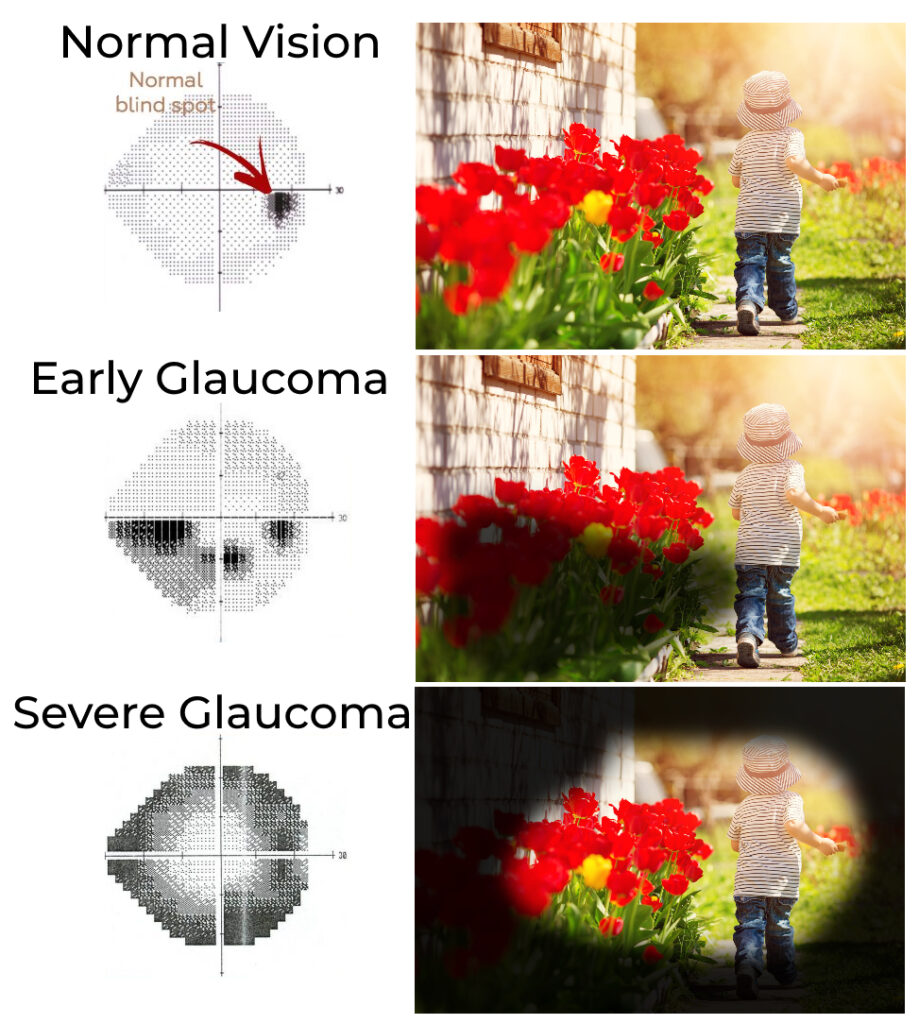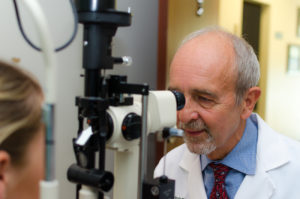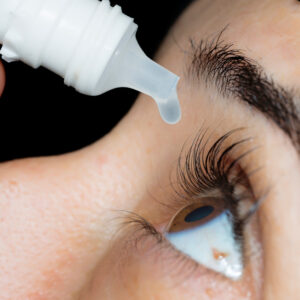
What is Glaucoma?
Glaucoma is a vision-threatening disease that causes damage to the optic nerve, typically from the intraocular pressure being too high for the health of the eye.
Glaucoma is one of the leading causes of vision loss and involves progressive and irreversible damage to the optic nerve. Through early detection, diagnosis, and treatment, you and your doctor can help to preserve your vision.
Main Types of Glaucoma
There are two basic types of glaucoma which are open-angle glaucoma and angle-closure glaucoma. Primary open-angle glaucoma (POAG) is the most common type of glaucoma; it accounts for ~90% of those with the disease.

It is a chronic condition, meaning that it develops slowly over time. In POAG, eye pressure increases because of improper drainage of aqueous humor from the eye.
No symptoms or pain are typically noted in the early stages, which is a reason why it is known as the “silent thief of sight.” Therefore, early detection through our extensive examinations is important.
Angle-closure glaucoma (also known as closed-angle glaucoma) is much rarer, occurring in less than 10% of those with the disease.
Unlike POAG, in those who have angle-closure glaucoma, the eye pressure rises very quickly. This can occur due to drainage canals being blocked by the iris (similar to something covering the sink drain).

Common Signs and Symptoms of Glaucoma
Glaucoma has been called the “sneak thief of sight,” because people afflicted do not have many symptoms until the later stage of the disease. Because the changes are usually slow and gradual, even vision loss is not always apparent.
Glaucoma’s hallmark symptom is a gradual loss of peripheral vision, usually in both eyes. It leads to tunnel vision and eventual total blindness, if not treated.
Other Potential Symptoms of Glaucoma
These are generally in combination with gradual vision loss or tunnel vision. These issues are considered an eye emergency.
- Severe eye pain
- Nausea (accompanying eye pain)
- Haloes/rainbows around lights
- Extremely blurred vision
- Reddening of eye

What increases my risk of glaucoma?
- Being over 40 years old
- A family history of glaucoma
- African ancestry, Asian or Japanese heritage
- Elevated eye pressure
- Having a thinner cornea
- Nearsightedness
- Past injuries to the eyes
- Chronic steroid use
- Having other health conditions like diabetes, migraines, high blood pressure, or poor blood circulation

Glaucoma Treatment
The goal of glaucoma treatment is to lower pressure in your eye. Treatment is determined on the specific type of glaucoma, the severity of the disease, and how well it responds to treatment.
Though the damage done from glaucoma cannot be reversed, medicated eye drops, laser treatments, and surgical intervention can help stop further damage. Medicated eye drops, laser treatments, and surgery can all work to improve the flow of fluid out of the eye therefore lowering eye pressure.